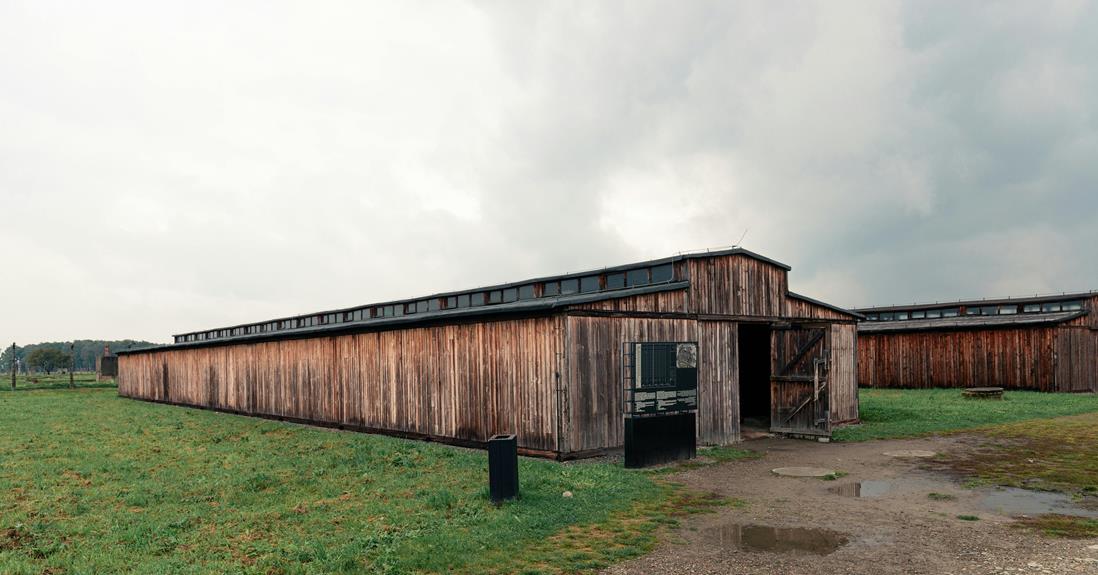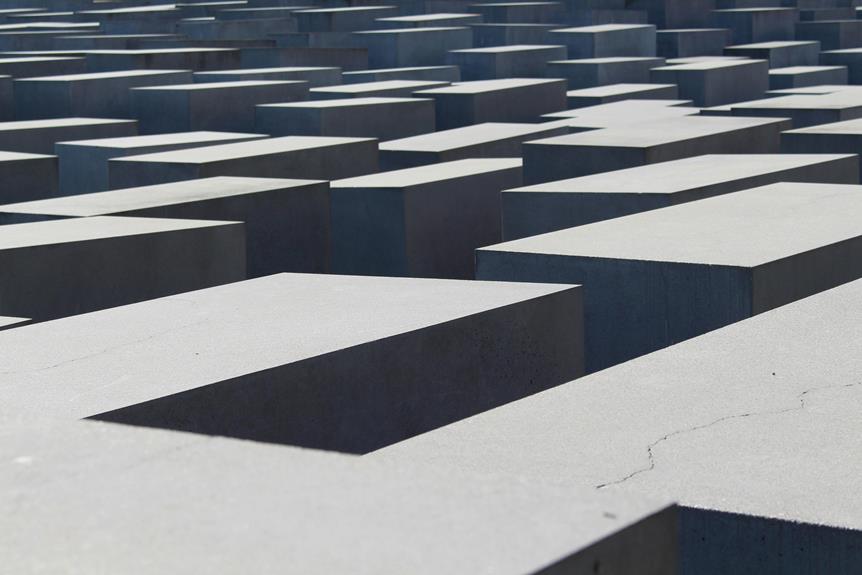The dark history of Jasenovac, Croatia, remains a poignant reminder of the atrocities that unfolded during World War II. As one of the most infamous concentration camps, Jasenovac symbolizes the depths of human cruelty and suffering experienced by countless individuals at the hands of the Ustasha regime. The stories of those who endured unspeakable horrors within its confines continue to echo through the generations, prompting reflection on the importance of remembrance and the pursuit of justice. Despite the passage of time, the legacy of Jasenovac serves as a stark warning against the dangers of unchecked hatred and intolerance, urging us to confront the past with unwavering resolve.
Key Takeaways
- Jasenovac was a concentration camp complex in Croatia during World War II.
- Operated by the Ustasha regime, it targeted Serbs, Jews, and Roma for extermination.
- Infamous for inhumane treatment, including torture, forced labor, and mass killings.
- Liberation brought mixed emotions, leading to efforts for justice and remembrance.
- Memorial sites and educational programs now serve to honor victims and promote tolerance.
Historical Background
What events in history led to the establishment of Jasenovac, Croatia as a significant historical site?
The origins of Jasenovac as a site of historical importance can be traced back to the establishment of the Ustasha regime in Croatia during World War II. The Ustasha regime, led by Ante Pavelic, aligned itself with Nazi Germany and implemented brutal policies targeting ethnic and religious minorities, particularly Serbs, Jews, and Roma.
In 1941, the Ustasha regime established the Jasenovac concentration camp complex, which became one of the largest and most notorious concentration camps in Europe.
The cultural impact of Jasenovac stems from the atrocities committed within its walls. The camp was characterized by extreme brutality, including torture, forced labor, and mass executions. It is estimated that tens of thousands of prisoners, including men, women, and children, perished at Jasenovac. The camp symbolizes the horrors of genocide and serves as a stark reminder of the consequences of unchecked hatred and discrimination.
The establishment of Jasenovac as a memorial and museum in the post-war period further solidified its significance as a historical site. Today, Jasenovac stands as a somber monument to the victims of the Holocaust and other atrocities committed during World War II, ensuring that the memory of those who suffered there will never be forgotten.
Establishment and Operations
The establishment of the Jasenovac concentration camp complex in Croatia during World War II marked the beginning of its operations as a site of systematic persecution and violence under the Ustasha regime. The camp was officially established in August 1941, following the orders of the Ustasha government, led by Ante Pavelić. The establishment process involved converting an existing brick factory into a camp complex that consisted of five primary camps and numerous smaller satellite camps.
Camp administration at Jasenovac was under the control of the Ustasha regime's officials, particularly the Ustasha Police, led by Vjekoslav Maks Luburić. The camp administration was characterized by extreme brutality and sadistic behavior towards the inmates. Guards at Jasenovac were known for their ruthlessness, often engaging in acts of torture, rape, and murder with impunity.
The camp's operations were geared towards the systematic extermination of ethnic and racial minorities, primarily Serbs, Jews, and Roma people. Prisoners at Jasenovac were subjected to forced labor, starvation, and medical experiments. The camp's administration implemented a policy of terror and dehumanization, aiming to eradicate any sense of identity and resistance among the inmates.
Inhumane Treatment of Prisoners
Prisoners at Jasenovac concentration camp in Croatia endured a harrowing array of inhumane treatment inflicted upon them by the camp's administration and guards. The prisoner experiences within the camp were marked by systematic extermination methods that aimed to dehumanize and destroy individuals based on their ethnicity, religion, or political beliefs.
Upon arrival, prisoners were subjected to brutal physical and psychological torment. They faced overcrowded living conditions, inadequate food and water, and unsanitary facilities. The guards employed various forms of torture, including beatings, mutilations, and forced labor under extreme conditions. Women and children were not spared from the cruelty; they were often separated from their families and subjected to sexual abuse and medical experiments.
Furthermore, the camp administration implemented a policy of systematic extermination, where prisoners were systematically killed through mass shootings, gas chambers, and gruesome medical procedures. The sheer scale and efficiency of these atrocities were designed to instill fear and helplessness among the prisoners.
Liberation and Aftermath
Following the liberation of Jasenovac concentration camp in Croatia, the immediate aftermath revealed the extent of the atrocities committed and the challenges faced in addressing the aftermath of such systematic violence and inhumanity. The liberation brought a mix of emotions ranging from relief to horror as the full scale of the horrors that had taken place within the camp became apparent. In the wake of liberation, the focus shifted towards rebuilding and healing the scars left by the traumatic events that unfolded at Jasenovac.
Liberation Celebrations: The end of the war marked a significant moment for those who survived the horrors of Jasenovac. Liberation celebrations were held to commemorate the freedom gained and to honor the memories of those who perished in the camp.
Post-War Rebuilding: The process of rebuilding post-war Croatia included addressing the destruction caused by the war and the need to provide support and care for survivors of Jasenovac. Rebuilding efforts aimed to create a more inclusive and peaceful society.
Challenges of Rehabilitation: The physical and psychological rehabilitation of survivors posed significant challenges due to the extent of the trauma experienced. Efforts were made to provide necessary support and resources to aid in the recovery process.
Justice and Accountability: Seeking justice and holding those responsible for the atrocities at Jasenovac accountable became an important part of the aftermath. Legal proceedings were initiated to bring perpetrators to justice and make sure that such atrocities would never be repeated.
Commemoration and Remembrance
Commemoration and remembrance play pivotal roles in preserving the historical significance of Jasenovac concentration camp in Croatia. The memory of the atrocities committed at Jasenovac serves as a somber reminder of the consequences of hatred and intolerance. Through memorial sites and educational programs, efforts are made to guarantee that future generations learn about the horrors that took place, fostering a commitment to never let such events occur again.
One of the most significant ways in which the memory of Jasenovac is honored is through various memorial sites that have been established. These sites serve as places of reflection and tribute to the thousands of innocent lives lost at the camp. Visitors to these memorials can pay their respects, learn about the history of Jasenovac, and gain a deeper understanding of the impact of the Holocaust.
Educational programs are also instrumental in ensuring that the memory of Jasenovac lives on. Schools and organizations offer workshops, lectures, and guided tours to educate people about the atrocities that occurred at the camp. By providing historical context and personal stories, these programs help to keep the memory of Jasenovac alive and emphasize the importance of tolerance and respect for all individuals.
Frequently Asked Questions
What Impact Did the Jasenovac Camp Have on Croatian Society?
The legacy impact of historical events such as those at Jasenovac camp can have a profound influence on societal healing. Understanding the repercussions of such atrocities on Croatian society involves a deep exploration of the lasting effects on collective memory, intergroup relations, and national identity.
Acknowledging this impact, addressing historical injustices, and fostering dialogue are vital steps towards reconciliation and promoting a more inclusive and empathetic society.
Were There Any Attempts to Cover up the Atrocities at Jasenovac?
As history unfolds, attempts to conceal atrocities are not uncommon, underscoring the complexity of human nature.
The question of cover-up attempts at specific historical events, such as those at Jasenovac, carries significant weight in understanding the preservation or manipulation of historical truths.
Analyzing such efforts reveals layers of historical significance, shedding light on the complexities of memory, justice, and societal accountability in the face of past horrors.
How Did Survivors Cope With the Trauma After Liberation?
After liberation, survivors of traumatic events often face immense emotional and psychological challenges. Many survivors cope with the trauma through various methods, including seeking counseling support and participating in healing workshops.
These avenues provide survivors with the necessary tools and environment to process their experiences, heal from their trauma, and rebuild their lives. Counseling support offers a safe space for survivors to express their emotions and navigate the complexities of their post-traumatic journey, while healing workshops provide opportunities for communal healing and resilience-building.
Are There Any Ongoing Legal Proceedings Related to Jasenovac?
Ongoing investigations related to historical events often involve intricate legal proceedings aimed at establishing accountability. These legal processes are vital for seeking justice, ensuring historical accuracy, and upholding the rule of law.
In cases like these, legal accountability becomes essential in addressing past atrocities and providing closure to victims and their families. The pursuit of justice through ongoing legal proceedings can serve as a means of acknowledging the suffering of those affected.
What Efforts Are Being Made to Educate Future Generations About Jasenovac?
Education initiatives play a vital role in preserving historical memory and fostering understanding among future generations. Various educational programs, such as workshops, seminars, and curriculum integration, are being implemented to educate individuals about significant events.
Additionally, remembrance events like memorials, exhibitions, and commemorations serve as poignant reminders of the past. These efforts aim to guarantee that the lessons learned from history are not forgotten and contribute to building a more informed and empathetic society.
Conclusion
To sum up, the history of Jasenovac in Croatia serves as a grim reminder of the atrocities committed during World War II.
The systematic extermination of innocent victims through forced labor and mass killings highlights the depths of human cruelty.
Through memorial sites and educational programs, the memory of those who perished in Jasenovac is preserved, promoting tolerance and respect in the face of hatred and intolerance.
Jasenovac stands as a confirmation to the importance of remembrance and learning from the past.


